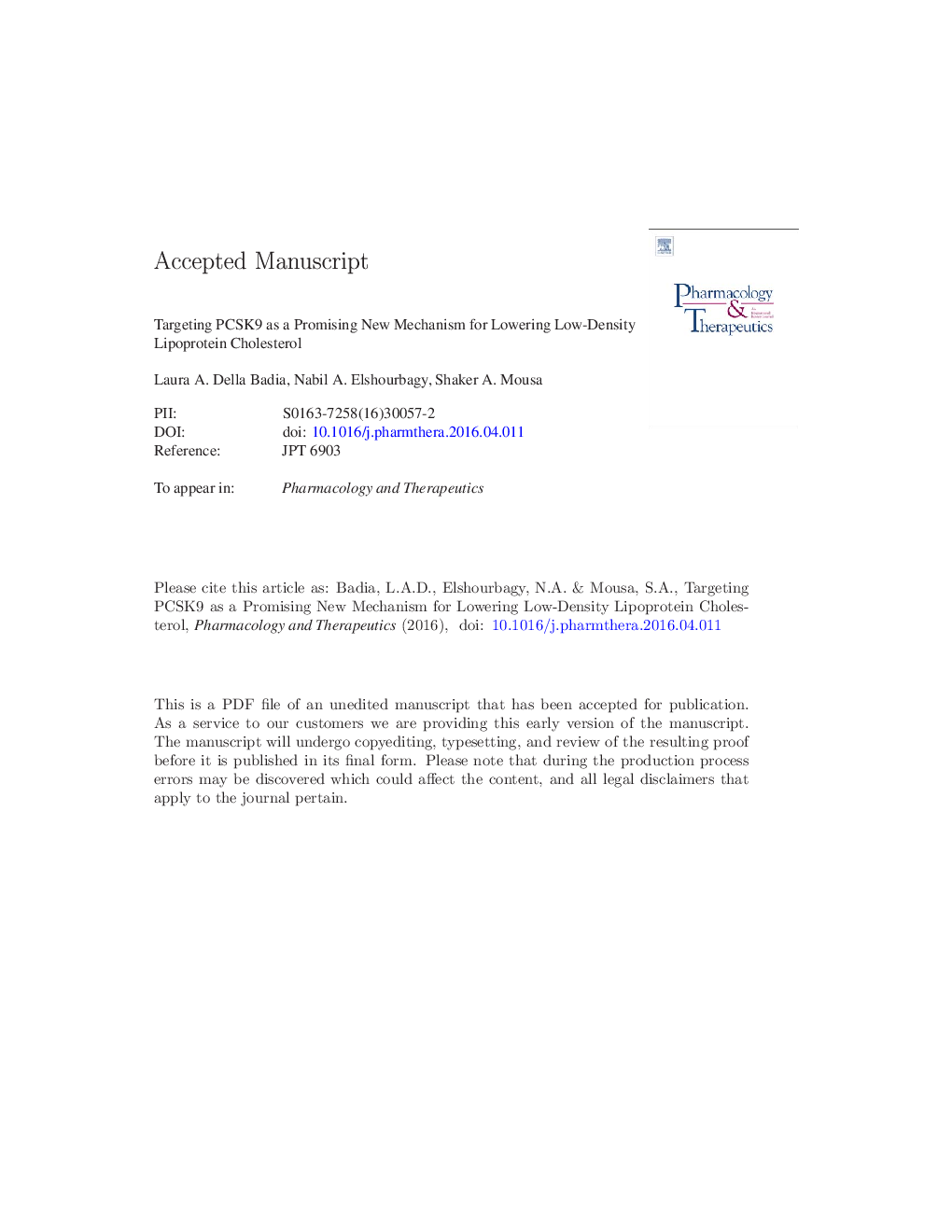| کد مقاله | کد نشریه | سال انتشار | مقاله انگلیسی | نسخه تمام متن |
|---|---|---|---|---|
| 5843886 | 1560941 | 2016 | 44 صفحه PDF | دانلود رایگان |
عنوان انگلیسی مقاله ISI
Targeting PCSK9 as a promising new mechanism for lowering low-density lipoprotein cholesterol
دانلود مقاله + سفارش ترجمه
دانلود مقاله ISI انگلیسی
رایگان برای ایرانیان
کلمات کلیدی
EGFASOALTLDL-CEvolocumabMTPapoBPCSK9antisense oligonucleotide - oligonucleotide antisensealanine transaminase - آلانین ترانس آمینازApolipoprotein B - آپولیپوپروتئین Bcardiovascular disease - بیماری قلب و عروقیCVD - رسوب دهی شیمیایی بخار epidermal growth factor - عامل رشد اپیدرمیAlirocumab - علی کومامبHypercholesterolemia - هیپرکلسترولمی microsomal triglyceride transfer protein - پروتئین انتقال تری گلیسرید میکروسمالیproprotein convertase subtilisin/kexin 9 - پروتیکین تبدیلات زیرتیلیسین / ککسین 9Low-density lipoprotein cholesterol - کلسترول لیپوپروتئین با چگالی کم
موضوعات مرتبط
علوم پزشکی و سلامت
داروسازی، سم شناسی و علوم دارویی
داروشناسی
پیش نمایش صفحه اول مقاله

چکیده انگلیسی
Statins and other lipid-lowering drugs have dominated the market for many years for achievement of recommended levels of low-density lipoprotein cholesterol (LDL-C). However, a substantial number of high-risk patients are unable to achieve the LDL-C goal. Proprotein convertase subtilisin/kexin 9 (PCSK9) has recently emerged as a new, promising key therapeutic target for hypercholesterolemia. PCSK9 is a protease involved in chaperoning the low-density lipoprotein receptor to the process of degradation. PCSK9 inhibitors and statins effectively lower LDL-C. The PCSK9 inhibitors decrease the degradation of the LDL receptors, whereas statins mainly interfere with the synthetic machinery of cholesterol by inhibiting the key rate limiting enzyme, the HMG CoA reductase. PCSK9 inhibitors are currently being developed as monoclonal antibodies for their primary use in lowering LDL-C. They may be especially useful for patients with homozygous familial hypercholesterolemia, who at present receive minimal benefit from traditional statin therapy. The monoclonal antibody PCSK9 inhibitors, recently granted FDA approval, show the most promising safety and efficacy profile compared to other, newer LDL-C lowering therapies. This review will primarily focus on the safety and efficacy of monoclonal antibody PCSK9 inhibitors in comparison to statins. The review will also address new, alternative PCSK9 targeting drug classes such as small molecules, gene silencing agents, apolipoprotein B antisense oligonucleotides, and microsomal triglyceride transfer protein inhibitors.
ناشر
Database: Elsevier - ScienceDirect (ساینس دایرکت)
Journal: Pharmacology & Therapeutics - Volume 164, August 2016, Pages 183-194
Journal: Pharmacology & Therapeutics - Volume 164, August 2016, Pages 183-194
نویسندگان
Laura A. Della Badia, Nabil A. Elshourbagy, Shaker A. Mousa,